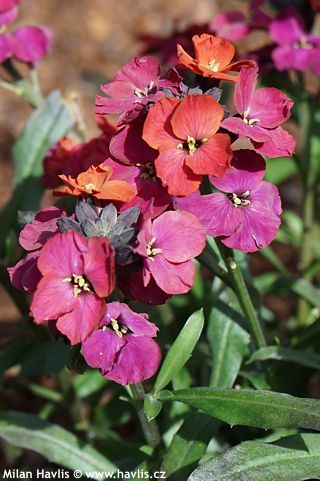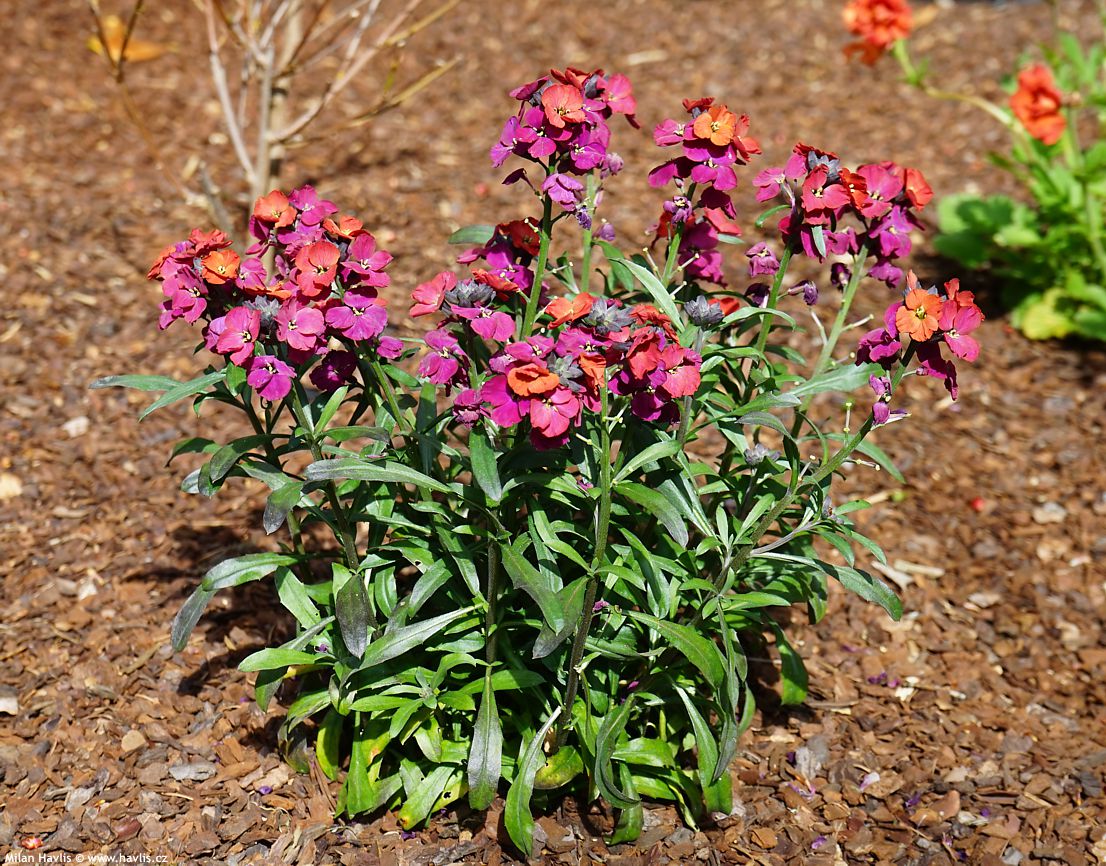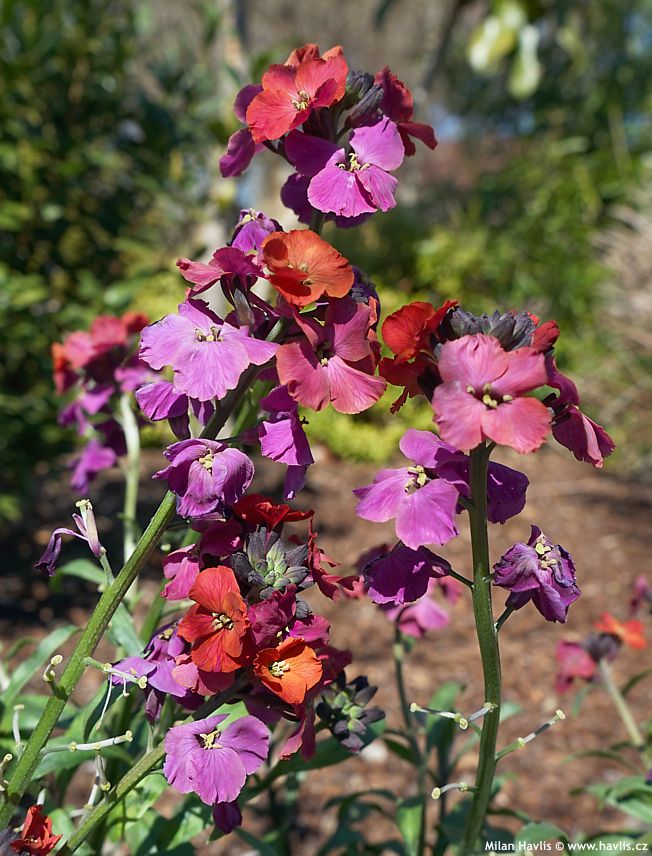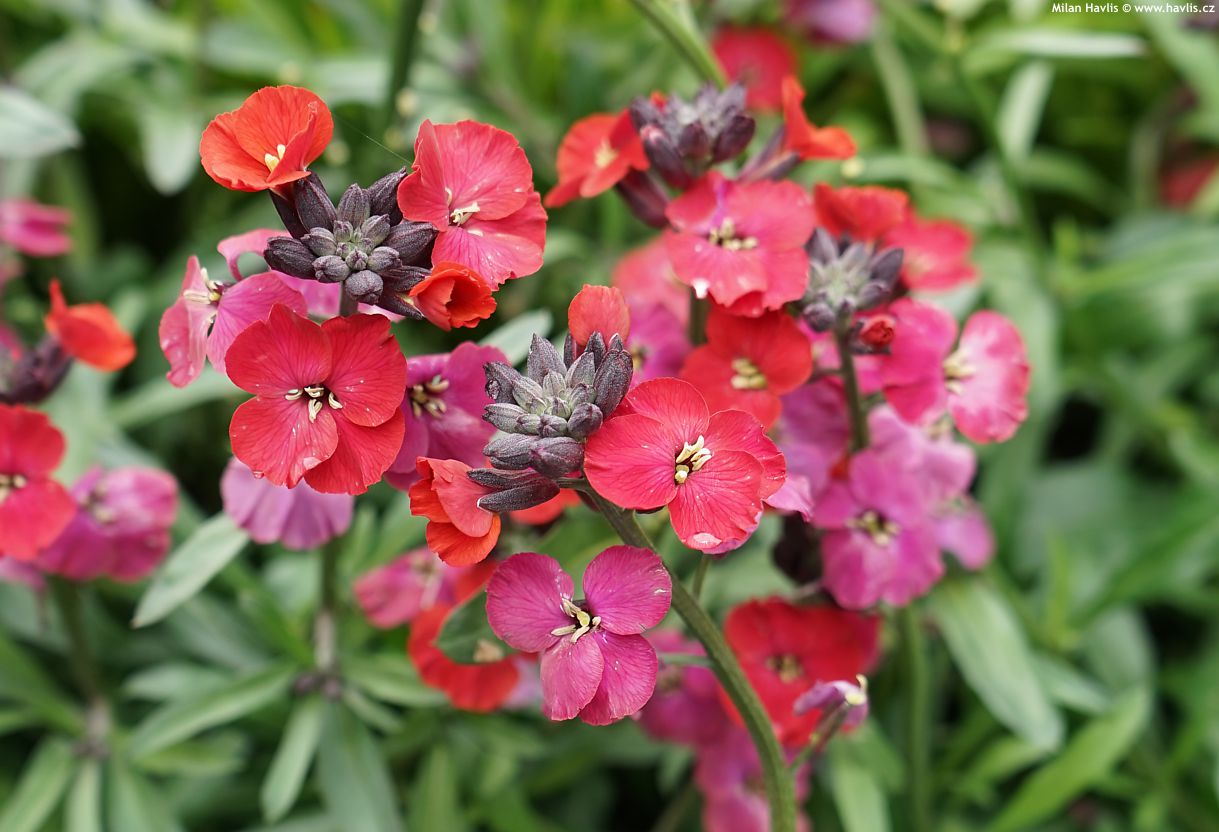Erysimum 'RED JEP' wallflower
size/type
low perennial,mid-sized perennial
usual height
0,3-0,5m
usual width
0,3-0,5m
leaves
evergreen broadleaf
colour of leaves
flowers
showy
colour of flowers
blooming time
May-September
location
full sun
soil type
neutral to alkaline
soil moisture requirements
dry and sharply drained (xeriscape)
USDA zone (lowest)
7 (down to -23°C)
winter protection
for zone 5+6

for zone 7

categorized
Erysimum
Wallflower is a genus of attractive herbaceous plants which are rated as biennials, annuals or short-lived woody-based perennials. It belongs to the same family of cruciferous vegetables as cabbage, cauliflower or broccoli (brassicaceae), but it is not meant to be eaten – only to be looked at and admired which puzzles me a little when it comes to its common name. Wallflower is native to southern Europe, northern Africa, western and central Asia and North America. In modern horticulture the varieties that are most often cultivated are those that arose from the crossing of e. cheiri and e. linifolium. They stand out with colorful flowers and some even with a sweet, violet-like scent.Description of the plant:
Red Jep is a wallflower variety with red flowers. They are a rich and warm shade of blood orange as they open, and fade to pale purple to pastel violet magenta as they mature. They bloom from the first truly warm days of spring and bloom until the end of summer. New buds are formed repeatedly atop bare, leafless stems which can grow to a height of around 50 cm by the end of the growing season. If you don't like the overgrown stems, you can remove them in midsummer and the plant will produce new stems with fresh buds from inside the clump. The leaves are narrowly lanceolate to oblong, medium green and evergreen in mild winters. The entire clump with leaves is dense and compact and can triple in size in one year.During flowering, you can gently fertilize the plant with organic fertilizers. Excess feeding will result in bombastic flowering but will exhaust the plant so much that it will very likely not survive the winter. It has to be said that wallflower is short-lived as a perennial. Nevertheless, it enjoys increasing popularity, because if you plant it in suitable conditions, even the few years that it lasts in the flower bed will delight you with its long-lasting flowering period like few other perennials.
Wallflower loves full sun and free-draining, preferably alkaline or neutral, less fertile to poor soil. In cold regions, cover the plant with fir branches for the winter to prevent the roots from getting wet with snow and to protect it from hard frost. Hardiness varies a lot and is most often rated around -21 °C (USDA zone 6).
Last update 29-04-2014
QUICK PRICE OVERVIEW
CURRENTLY SOLD OUT
















